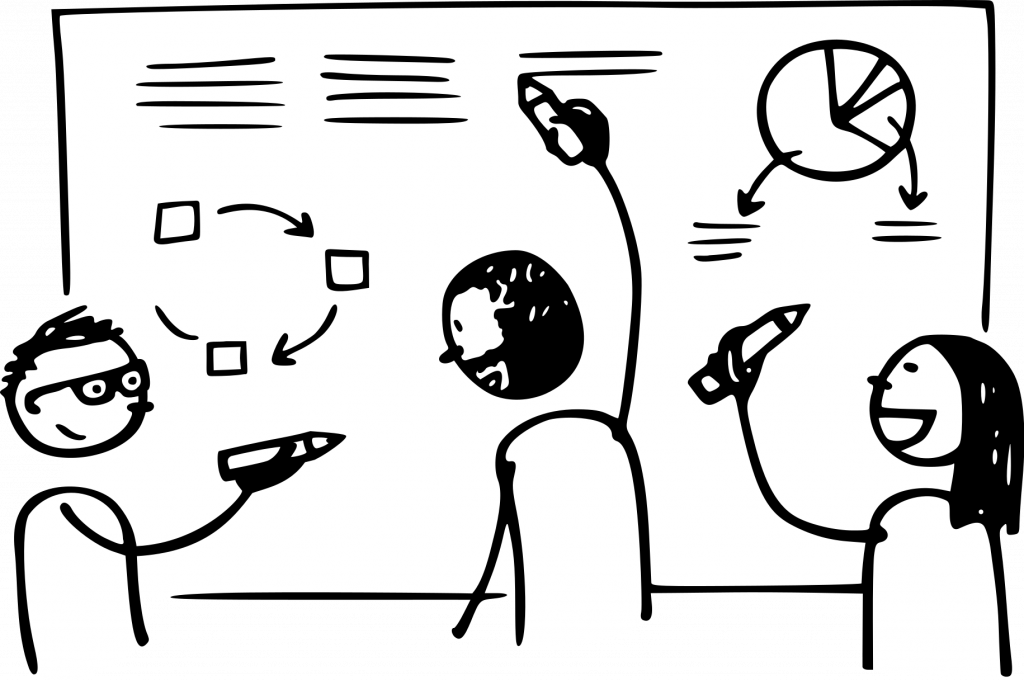Methods: Rights and Licences
Clarifying Rights
Legal questions to be clarified (if necessary, consult legal departments, data protection officers at research institutions, review contracts, etc.):
Regarding Copyright and Exploitation Rights
- Are the generated research data considered „works“ with sufficient originality, thus enjoying copyright protection?
- Are the research data possibly protected by related rights?
- Who is the author? Are there other individuals who contributed to the work and thus have co-authorship?
- Are there contractual stipulations from funding institutionsFunding institutions are organizations that provide financial support for scientific research, such as foundations, associations, or other entities. Internationally, most of these institutions have established guidelines for research data management (RDM) in research projects, meaning that potential funding is tied to specific requirements and expectations for handling research data. Some of the most well-known funding institutions in German-speaking countries include the Federal Ministry of Education and Research (BMBF), the education and science ministries of the federal states, the German Research Foundation (DFG), the Volkswagen Foundation, the Austrian Science Fund (FWF), and the Swiss National Science Foundation (SNF). Read More or other third-party funders?
- Were the research data generated independently or under instruction?
- Are the researchers employed, and is the creation of works part of their employment contract, or are there other contractual provisions? Do the usage rights transfer to the employer?
- Are there general regulations at the research institution regarding authorship for works created within the framework of employment?
- Are there model contracts at the research institution for granting usage rights?
Regarding the Rights of Third Parties (Copyright, Data Protection, and Personal Rights):
- Are personal data processed in the research data? Has consent been obtained from the affected individuals? Are the data anonymized? (See articles on Data Protection, Informed Consent, Anonymization and Pseudonymization)
- Do the research data contain copyrighted content from third parties? Have usage rights been obtained for this content? Or are these contents under an open license, and is it compatible with the planned license for the research data? Are the licensing details correctly indicated according to the license conditions?
- Are there images or videos in the research data showing identifiable individuals? Has consent been obtained from these individuals for publication and distribution? Or have the individuals been removed or obscured (using filters)?
Licensing
Excursus: Creative Commons Licenses
Creative Commons licenses are widely used, standardized licensing agreements composed of different building blocks. Each block specifies a condition for reuse, visualized with symbols, which are highly recognizable, enabling re-users to quickly understand the applicable conditions.

RIGHTS
BY Attribution – The name of the author must be credited.
NC Non-Commercial – The work may not be used for commercial purposes.
ND No Derivates – The work may not be altered.
SA Share Alike – The work may only be shared under the same conditions (license).
Source: Creative Commons-Lizenzen, Shaddim licensed under CC-BY-4.0
The globally valid licensing agreements are formed from these building blocks: CC0, CC BY, CC BY-SA, CC BY-NC, CC BY-NC-SA, CC BY-ND, and CC BY-NC-ND.
- CC0 represents a waiver of copyright.
- CC BY is an example of a very open license.
- CC BY-ND is more restrictive as the work may not be modified.
When material offered under a CC license is used in another work, the CC license of the new work depends on the original material’s license, and different license variants may not be compatible (Klimpel, 2019). For example, if a photo published under CC BY-SA is used in an article to be published under CC BY, the exact license of the article must also be CC BY-SA.
For the publication and archiving of research data, a specific CC license cannot be recommended in general, as contractual agreements, the type of data, their origin, and (potentially sensitive) content determine the appropriate license on a case-by-case basis. However, for academic text publications, the CC BY license has already become established and is recommended by the DFG (DFG, 2014).
Selecting the Appropriate CC License
To select the appropriate license, the licensing party must answer the following questions:
If no other CC-licensed materials are used:
May my work be modified? If yes, may the modifications be shared? If yes, under the same conditions? Is commercial use of the work permitted?
When Using CC-Licensed Material:
Under which license is the material published? Is this license compatible with my intended license, or does it determine the license for my work?
License Indication in Publications
In general, (CC) licenses should include (TUM, 2023, pp. 6):
- The name of the license
- The license version (if multiple versions exist, e.g., CC 3.0, 4.0…)
- A link to the license or license text
- If applicable, the logo/image associated with the license
Examples

License Indications When Using Third-Party Works in One’s Own Work:
For mixed works with heterogeneous licenses, licensing information must always be placed directly on the work, such as the license information, source/author, and license link in the caption of a protected image.
Examples

Source: Collaborative work 1, Cocomaterial licensed under CC 0 1.0 1According to the license, attribution of the authors is not mandatory for this image; however, it is advisable to cite the source to ensure legal security and to honor the authors.
Even for self-created visual material that shares the same license as the overall work, it is recommended to include the source and licensing information directly on the visual material.
Examples
see: Guide
Literature
Deutsche Forschungsgemeinschaft (DFG). (2014). Appell zur Nutzung offener Lizenzen in der Wissenschaft. Information für die Wissenschaft Nr. 6. https://www.dfg.de/de/aktuelles/neuigkeiten-themen/info-wissenschaft/2014/info-wissenschaft-14-68
Klimpel, P. (2019): Bearbeitungen frei lizenzierter Inhalte richtig kennzeichnen. iRight.info
https://irights.info/artikel/bearbeitungen-frei-lizenzierter-inhalte-richtig-kennzeichnen/29555Universitätsbibliothek Technische Universität München (TUM) (2023). Handreichung zu rechtlichen Aspekten des Forschungsdatenmanagements. https://mediatum.ub.tum.de/doc/1690463/document.pdf
